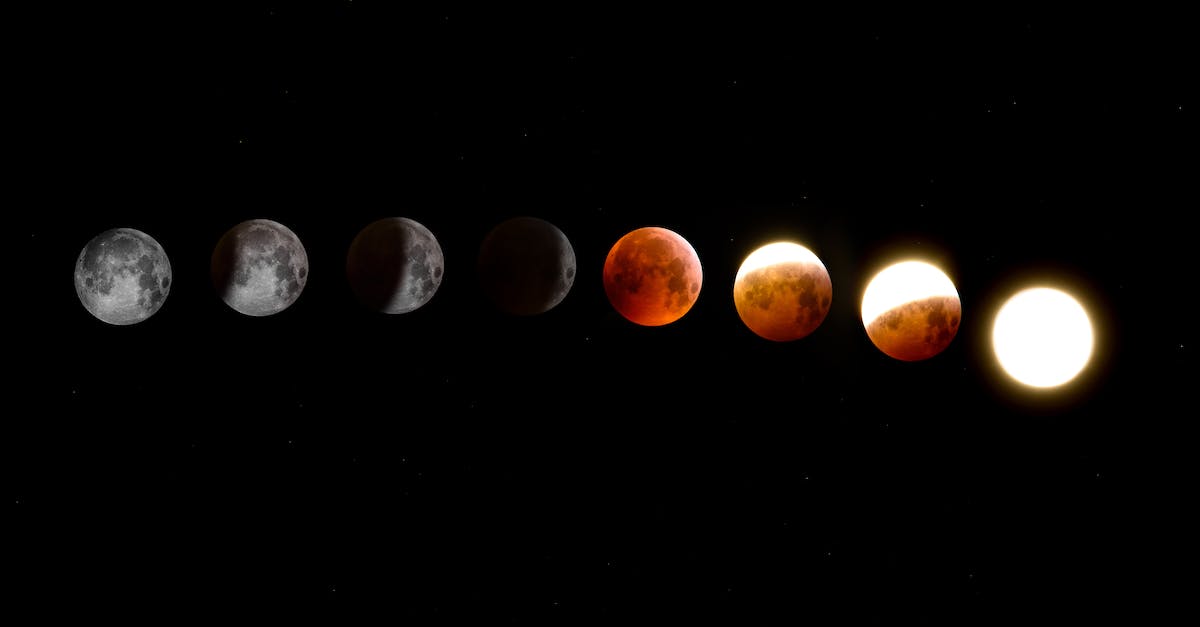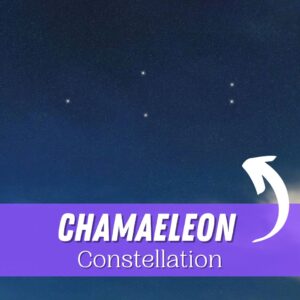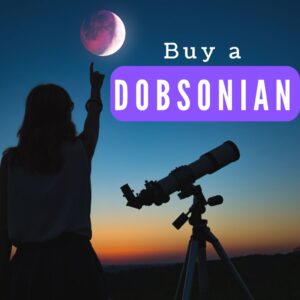This site contains affiliate links to products. I may receive a commission for purchases made through these links.
I’ve always been fascinated by the celestial dance that results in solar and lunar eclipses. It’s a natural spectacle that has intrigued humans for millennia. In this article, we’ll explore the science behind these astronomical events and share some safety tips for observing them.
Solar and lunar eclipses occur when the Earth, Moon, and Sun align in a particular way. While they’re thrilling to witness, it’s crucial to do so safely. We’ll delve into some practical tips to ensure your eclipse viewing experience is both memorable and secure.
What are Solar and Lunar Eclipses?
As an expert in astronomy, I find solar and lunar eclipses fascinating. These amazing celestial events involve an intricate dance between the Earth, Sun, and Moon. For an eclipse to happen, these three bodies have to align in a particular way.
Let’s start with solar eclipses. These events occur when the moon passes between the Earth and the Sun, causing temporary darkness in the daytime sky. There are three kinds of solar eclipses:
- Total: where the Moon completely obscures the Sun
- Partial: where the Moon covers only a part of the Sun
- Annular: where the Moon’s apparent size is smaller than the Sun, causing the Sun to look like a bright ring or ‘annulus.’
On the other hand, a lunar eclipse happens when the Earth comes in between the Sun and the Moon, casting its shadow on the Moon. It can be total or partial, depending on how the Earth’s shadow falls on the Moon.
It’s important to note that both solar and lunar eclipses happen sporadically. That’s because the orbits of Earth and Moon are tilted relative to each other. As a result, they tend not to align every month, but rather, a few times yearly.
Alright, that gives you a brief understanding of these awe-inspiring celestial events. But remember, observing them requires utmost care. Unless you are looking at a total solar eclipse during its ‘totality’ phase, you’ll need special protective eyewear. So, let’s talk about that next.
How do Solar and Lunar Eclipses occur?
Understanding how solar and lunar eclipses occur requires a bit of astronomy insight.
Solar eclipses take place when the moon finds its way directly between the Earth and the Sun. This is the Moon’s moment in the spotlight – or rather, the Sun’s. Under the shadow of the moon, daytime turns to nighttime. We see this event happen from Earth. Yet, you won’t be able to view it just anywhere. Only certain geographical locations experience the effects of a solar eclipse.
We find three types of solar eclipses:
- Total: When the Moon completely blocks the Sun.
- Partial: Parts of the Sun are still visible around the Moon.
- Annular: The Moon’s positioned in such a way that a ring of the Sun remains visible.
A lunar eclipse is a different ball game. Here, the Earth earns the role of the middleman between the Sun and the Moon. As a result, we cast our shadow on the Moon – turning the usual bright, milky-white celestial body into an eerie, blood-red anomaly. Unlike solar eclipses, you can witness Lunar eclipses from any place on the night side of Earth.
Both these celestial events aren’t exactly predictable. You see, the Earth and the Moon don’t have perfect circular orbits, rather, they’re elliptical. Plus, the orbits are also slightly tilted – this sporadic alignment is what makes the timing of eclipses a bit of a guessing game.
The observation of these eclipses – that’s an affair requiring utmost safety measures. Pay heed to protective eyewear, especially for solar eclipses. Your average sunglasses won’t cut it. Look for ISO certified solar viewing glasses. Don’t let an astronomical marvel become an optical hazard!
Solar and Lunar eclipses, in all their celestial wonder, are a testament to the intricate interplay of the heavenly bodies.
The Different Types of Solar and Lunar Eclipses
Stepping in, I’d love to toss light on the diverse types of solar and lunar eclipses. Everyone knows they happen, but how many truly understand the significance of what they’re witnessing, or the variety of these awe-inspiring events? Well, let me break it down for you.
Solar Eclipses
The intriguing spectacle that’s a solar eclipse comes in three forms: total, partial, and annular.
- Total Solar Eclipse – This type occurs when the moon entirely obscures the sun. As an observer, you’d be positioned in the umbra, the darkest part of the moon’s shadow.
- Partial Solar Eclipse – Contrary to total, a partial solar eclipse is when the sun isn’t fully covered by the moon. People watching this will find themselves in the penumbra, a lighter, diffused shadow region.
- Annular Solar Eclipse – The last type is the annular solar eclipse. Here, the moon’s at its furthest from the earth, causing it to cover the central part of the sun, leaving a bright ring or “annulus” around the edges.
Lunar Eclipses
Moving to the calming glow of a lunar eclipse, we find two primary types: total and partial.
- Total Lunar Eclipse – This happens when the earth’s shadow fully covers the moon, eventually displaying a captivating, coppery red moon (often called a Blood Moon.)
- Partial Lunar Eclipse – As the title suggests, it’s when only a portion of the moon falls into the earth’s shadow, revealing a fascinating dance of light and darkness in the night sky.
Don’t get confused if you occasionally hear about a third lunar eclipse type, the penumbral lunar eclipse. It’s when the moon passes through the earth’s outer shadow (penumbra). However, it’s less noticed as the moon only appears slightly darker.
It’s crucial to bear in mind that solar and lunar eclipses aren’t scheduled theater plays on demand. Rather, they’re unpredictable celestial shows that solely hinge on the Earth, Sun, and Moon alignment paired with the moon’s current position in its elliptical orbit.
Observing Solar and Lunar Eclipses Safely
In light of the potential threats that come with observing eclipses, it’s essential to prioritize safety. For example, when viewing a solar eclipse, the sun’s harmful rays can damage your eyes. Hence, I strongly recommend the use of ISO certified solar viewing glasses. These glasses can safeguard your eyes from the intense sunlight during the eclipse.
Solar viewing glasses are readily available and come in many different styles. However, it’s critical that you ensure the glasses are ISO 12312-2 compliant. This standard ensures they provide the essential level of protection. Before use, check for any signs of damage. Scratches or holes can compromise the shielding effectiveness, so discard damaged glasses.
When observing lunar eclipses, the safety norms are a bit more relaxed as they don’t involve straightaway looking at the sun. Even so, remember to use familiar precautions when viewing at night. Use a torch for moving around, keep clear of dangerous terrain and ensure you’re warmly dressed if it’s a cold night.
Observing an eclipse is a phenomenal experience. Advances in technology have given us tools like telescopes and binoculars that can enhance our viewing experience. If you’re using these tools to observe a solar eclipse, ensure they are fitted with a solar filter. Without a suitable filter, the sunlight can damage these instruments, and worse, it can harm your eyes.
Remember, safety always comes first. With the right precautions and equipment, you can enjoy these rare celestial events to their fullest. Whether it’s a solar or lunar eclipse, understanding the importance of safety and how to implement it, significantly enhances your experience.
Safety Tips for Viewing Solar Eclipses
As an avid observer of celestial events, I can’t stress enough how critical it is to prioritize safety when observing solar eclipses. The sun, even when partially hidden during an eclipse, can do damage to your eyes if observed directly. Now, let’s discuss some key safety tips that will protect you during solar eclipse observation.
First and foremost, never look directly at the sun, even if it’s during an eclipse. To safely observe a solar eclipse, it’s essential to use ISO Certified solar viewing glasses. With proper usage, these glasses shield your eyes from harmful solar radiation that could cause permanent eye damage or blindness. Following this advice, you’ll ensure that your eclipse viewing experience is both safe and unforgettable.
When introducing tools such as telescopes or binoculars to your observation, always use them with solar filters that are designed for this purpose. Keep in mind that regular sunglasses, dark materials, or makeshift filters are not suitable substitutes for proper solar filters. Using such alternatives can cause severe eye damage, as they do not effectively screen out harmful infrared and ultraviolet radiation.
To further enhance safety, it’s wise to limit your observing session duration. Prolonged staring at the sun— even when using suitable protective equipment— could potentially stress your eyes.
Here’s a quick rundown of the safety guidelines:
- Always use ISO certified viewing glasses.
- Never use any substitutes for proper solar filters.
- Limit your viewing time.
These safety protocols might seem excessive, but remember, eye safety is paramount. The sun is a powerful force, and we must respect that power. After all, it’s only through careful observation that we can truly appreciate these marvelous celestial events, and prepare ourselves for when they arrive next. Bear these safety tips in mind, and you’ll find observing solar eclipses is a thrilling experience that enriches our understanding of the universe around us.
Safety Tips for Viewing Lunar Eclipses
Unlike solar eclipses, viewing lunar eclipses doesn’t require special equipment or protective eyewear. This is because lunar eclipses occur when the Earth’s shadow blocks sunlight from reaching the Moon. The brightness of the Moon during a lunar eclipse is significantly decreased, making it safe for direct viewing. However, there are still some tips you can follow to ensure your stargazing experience is the best it can be.
Find a Good Viewing Spot
Identifying the right spot to observe a lunar eclipse is essential. Light pollution from streetlights, buildings, and even the moon itself can significantly impact your viewing experience. Therefore, it’s best to find a dark, open area away from city lights where the moon is clearly visible in the sky.
Check the Weather
Late-night cloud cover can be your worst enemy when it comes to observing lunar eclipses. Always ensure you’re checking the weather forecast for your area before setting out. You wouldn’t want cloud coverage to spoil your lunar eclipse observation.
Use the Right Equipment
Even though lunar eclipses can be viewed with the naked eye, they’re even more impressive if you can use some magnification. Binoculars, a telescope, or even a high-resolution camera can enhance the experience. Make sure your equipment is set up and ready to go well before the lunar eclipse starts.
Take Precautions
Even though it’s safe to look at a lunar eclipse, it’s still important to take care of your eyesight. Don’t strain your eyes; take regular breaks from viewing, especially if using devices like a telescope.
Observing lunar eclipses can be a fascinating experience and following these tips can help ensure that you’re prepared and ready for the event. So, whenever the next lunar eclipse arrives, you’ll be well-equipped to enjoy this incredible celestial spectacle.
Conclusion
We’ve journeyed through the captivating world of solar and lunar eclipses. By now, it’s clear that these celestial events are not just awe-inspiring but also a testament to the wonders of our universe. But as we marvel at their beauty, let’s not forget the crucial aspect of safety. With ISO certified solar viewing glasses and solar filters for our telescopes or binoculars, we can safely observe these incredible events.
When it comes to lunar eclipses, remember that the right viewing spot and weather conditions can make a big difference. With the right equipment and precautions, we can fully appreciate these rare occurrences. So, as we look up to the sky, let’s remember to do it safely and responsibly. After all, our enjoyment of these celestial spectacles should never compromise our well-being. Here’s to many more safe and breathtaking eclipse viewings!
Frequently Asked Questions
What are the different types of eclipses?
There are two primary types of eclipses: solar and lunar. Solar eclipses occur when the moon comes between the sun and Earth, blocking the sun’s light. Lunar eclipses happen when the earth shadows the moon, often giving it a red tint.
How can I safely observe a solar eclipse?
You should always use ISO certified solar viewing glasses to observe a solar eclipse. Regular sunglasses or looking directly at the sun can cause permanent eye damage. When using telescopes or binoculars, ensure they have solar filters.
What precautions should I take while viewing a lunar eclipse?
Enjoying a lunar eclipse safely involves picking a good viewing spot, checking the weather, using appropriate observational equipment. Also, stay aware of your surroundings and beware of nocturnal animals or sudden weather changes.
Can viewing an eclipse damage my eyes?
Yes, staring directly at the sun during a solar eclipse without proper protection can cause serious eye damage, even blindness. However, observing a lunar eclipse is safe for the naked eye.
What equipment is best for viewing eclipses?
The right equipment varies depending on the type of eclipse. For solar eclipses, ISO certified solar viewing glasses and telescopes with solar filters are essential. For lunar eclipses, binoculars or a telescope can enhance the experience, but they’re not required as it’s safe to observe with the naked eye.



